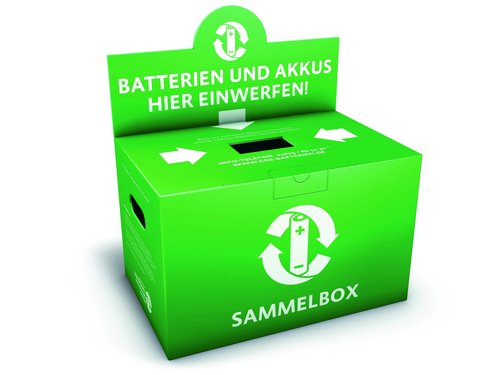Future-orientated battery return systems
A process chain analysis and hazard analyses were carried out on behalf of GRS Batterien and from these, action options were derived in order to ensure "sustainable, future-viability of the collection, transport and disposal of equipment batteries and equipment battery-like industrial batteries".
In the next few years the quantity of primary and secondary lithium batteries to be disposed of will become enormously important.
The application areas and type diversity are increasing constantly. In the case of secondary batteries there is a steady increase in lithium equipment batteries, which are used, for example, in telecommunication or portable computers.
The increasing use of very efficient and powerful mobile energy storage devices in electrical equipment, power tools and electric bicycles creates new challenges for the process chain, from collection through to recovery. Whereas, in the past, the collection and recovery of batteries focused on the pollution potential, in future the hazards of old end-of-life batteries as dangerous gods, e.g. in transport, will become more important. Lithium systems in particular, under certain circumstances, can have a high residual charge. Against the background of the significantly increasing quantity arising and increasing energy densities of individual battery systems, the battery joint take-back system (GRS Batterien) posed the question whether the current regulations, logistics systems and safety procedures are still adequate and practical.
Process chain and safety analyses
GRS Batterien commissioned the bifa environmental institute to carry out a practically orientated review of the process chain on the basis of quantity scenarios, interviews with those involved in the process chain as well as safety and hazard analyses, in order to develop and secure future take-back logistics and to propose measures for practical implementation and for the setting of rules and regulations. As a result it can be stated that the system is basically suitable for the future with regard to the identified hazards. However, there is still a need for optimisation is several places. The development of recommended actions is aimed at preventing identified "errors" with high hazard potential at the same time high probability of occurrence and to largely prevent "errors" with high hazard potential and medium probability of occurrence.
The high degree of complexity of the problem is, among other things, due to
- the diverse participants in the process chain with different areas of responsibility,
- a very different level of knowledge of the participants,
- the interweaving of national and international law in the different areas and
- internationalisation of the manufacturers of battery systems.
Isolated individual measures frequently enable only limited risk minimisation, either because they do not affect the core of the hazard or they have only a conditional effect.
The results of the study were first discussed in the project committee founded by GRS Batterien, in order to derive the next steps from the results.
![[Translate to Englisch:] Placeholder](/fileadmin/_processed_/e/b/csm_Header_Projekte_603d83e502.jpg)
